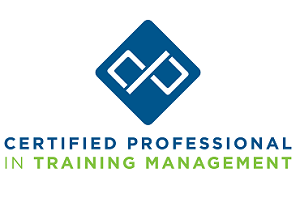How many post-workshop evaluations have mentioned the highlight of the day being the beautiful and engaging PowerPoint presentation?
Do you think that’s ever been the case for any presentation you’ve given or sat through?
Chances are that instead, the mere thought of an afternoon training session featuring slide 77 flicking to slide 78 sends shivers down the spines of most attendees. When delivering a training workshop, you are the primary visual aid and it’s up to you to add enthusiasm, energy, expertise and interaction to your session. Even experienced trainers can still struggle to use PowerPoint in a way that enhances their facilitation skills.
There are plenty of great alternatives to PowerPoint, but it’s still a reliable workhorse and if you are using it, it pays to be aware of some of the quick and easy techniques available to you.
This article will share three common challenges trainers face with their presentations, and what you can do to overcome them without having to be a PowerPoint expert.
Challenge 1: Too Many Slides
What’s the magic number of slides to use in a training session … who knows? There’s no definitive answer to that. That makes addressing this first challenge a little trickier.
When you have extended workshops, there might be a volume of content to work through, and the linear nature of slides makes it very hard to keep attendees engaged throughout.
Prezi is seen as an attractive alternative to PowerPoint because its zooming canvas allows you to travel through content in a non-linear way. The idea of seeing an agenda, zooming in to reveal the content, and then zooming back out helps chunk content into groups and supports effective delivery.
Did you know that this can be done in a very simple way in PowerPoint as well?
Your training session can likely be broken down into key sections or learning objectives that set the agenda for your session. These will be the agenda items that set the structure for your presentation.
Then follow these four steps:
- At the start of each agenda item, insert a clear divider slide.
- View your PowerPoint in slide sorter mode.
- Create a section for the collection of each slide.
- Go to Insert > Summary Zoom.
What you will see is a new slide that gives a snapshot of the first slide in each section (that’s why we’ve used dividers). If you have the time, you can then adjust or replace these snapshots and create a visually appealing overview of your presentation.
Then try it out in present mode: By clicking forward, you will travel through into each section and then return to this overview screen. It’s also interactive, as simply clicking on an image will take you to that section.
It’s very simple to do, has a huge impact and overcomes that feeling of being overwhelmed by content.
Challenge 2: Not Enough Space on One Slide
Not all ideas fit onto one slide, especially with diagrams, complex ideas or extended focus areas. But a choppy transition leaping from one slide to the next can interrupt the flow of learning.
Using a push transition is a very simple way to overcome this and join slides together to give a feeling of continuity.
- For instance, if you have a timeline that doesn’t fit onto one slide, put it across two slides.
- On the second slide, add a push transition, then adjust so it pushes in from the right.
- Go into present mode and review what that looks like.
You can then start exploring more advanced uses for these transitions. For example, you might ‘dive into’ further exploration of a topic with a push down or push from the left to “go back” to a previously visited idea.
Push transitions, when done well, are simple, look great, and can give you more space to work with.
Challenge 3: Too Much Text
This comes in third here but is often the most visible challenge. When people struggle with this, they really struggle! If you’ve got whole sentences or paragraphs on your slides, that means you are using them as your speaking notes and not as a visual aid.
If you are facilitating a training session, you should have a good working knowledge of your subject. You shouldn’t need slides with full sentences on them.
Turn those sentences into speaking prompts that then give you the space to connect with your audience, instead of having them read from the screen as you present.
- Find any slides full of bullet points or sentences.
- Examine each point and distill it down into 2-5 keywords.
- Go to insert > icon and find a relevant icon that matches the point being made.
- Insert the icon above or next to each set of keywords, and then align them.
This is another quick and simple improvement that can immediately lift the effectiveness of your presentations.
Three common challenges and three simple techniques.
With each one being so easy, you have nothing to lose by trying them out the next time you present. And you might just enjoy the extra impact they help you to deliver.





